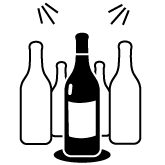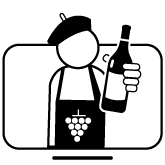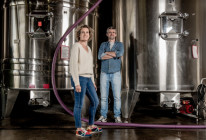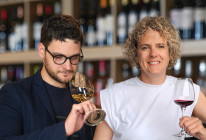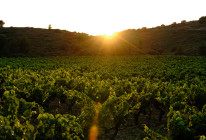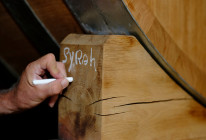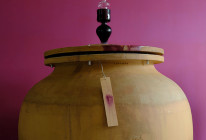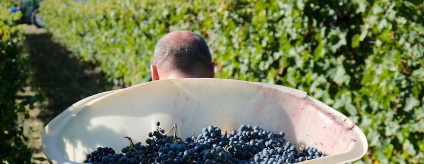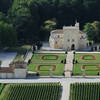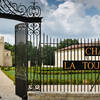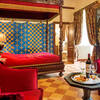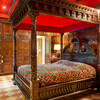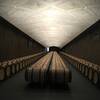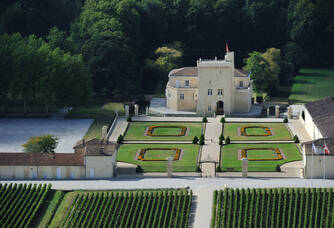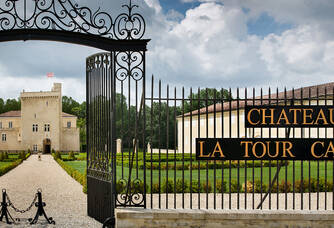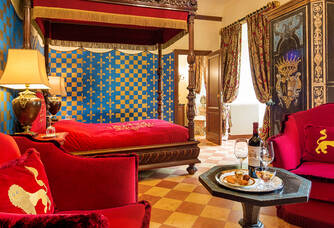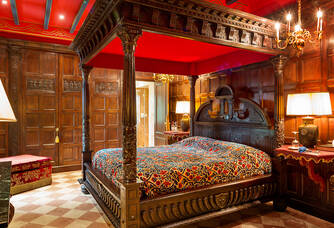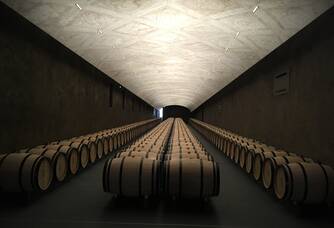Our story
On the road to Saint-Julien and Beychevelle, a crossbow jet from its church, the imposing quadrangular tower of Château La Tour Carnet rises in the axis of a monumental gate.If the thick walls could speak, they would tell us all the stories of this authentic feudal castle's past, from the 12th century to the present day, from the 100-year war to the great phylloxera epidemic, La Tour Carnet has passed through the adventures of man and time with nobility. Since the 16th century, particular care has been taken to cultivate the vines and the quality of the wine, an exceptional work that was recognised as early as 1855 at the Paris World Fair, when Château La Tour Carnet was included in the very closed list of Grand Crus Classés.It is with the passion and the requirement that we know him that Bernard Magrez undertook to raise even higher his Grand Cru Classé Haut-Médoc... A PEU D'HISTOIRESon the road to Saint-Julien and Beychevelle, a stone's throw from his church, the imposing quadrangular tower of the Château La Tour Carnet rises in the axis of a monumental gate. If the thick walls could speak, they would tell us all the stories of the past of this authentic feudal castle. In the 12th century, they would awaken the knight's gallop on the levy bridge, in the 17th century the "drum with chopsticks, which was used in the past to keep wolves and wild boars away from the harvest", while in the 19th century the glory hours of the "1855 classification" and the dark hours of the Phylloxera, before the beautiful wine-growing boom of the 20th century, would take place.MEDIEDEVAL RACINESits origins are lost in the mists of time. First called Château de Saint-Laurent, this former medieval fortress perched on the most beautiful slopes of the Médoc was used by the English against French chivalry, and inhabited since the 12th century. The castle's architecture (the famous round tower was built in the 11th century), which is defensive in style, evokes the troubled period of the Hundred Years' War. Nevertheless, the trade in Médoc wines was flourishing and the wines of Château Saint-Laurent were particularly appreciated: in 1407, a "hogsead" of Château Saint-Laurent wine, about 240 litres, sold for 36 écus, against about 6 écus for a Graves wine. At that time, "all châtelain wines being considered as quality wines, it was necessary to place a château in the centre of the vineyard". In the 13th century, the Maison de Foix, subservient to the King of England, owned the seigneury of Saint-Laurent. And when Bordeaux, in 1451, surrendered to the King of France, Count Jean de Foix and his faithful squire Carnet refused to submit. In 1486, Carnet became the executor of his master Jean de Foix's will, who had died a year earlier, and still refused to join the King of France. Fighting alongside the English who were harvesting in Aquitaine at the time, he supported a long siege in his castle. He was defeated by the "Beau Dunois", Joan of Arc's companion. The castle was then partially destroyed by order of the King of France. Over the centuries, the estate has known a succession of owners, including in the 16th century, Montaigne's brother-in-law, Thibault de Carmaing. in the heart of the revolution in medocan wine from 1500 to the Revolution, the Tour Carnet evolved in an era of profound change in the vineyard. Under the impetus of the growing importance of the members of the Parliament instituted by Louis XI, an aristocracy of dress was created, more interested in the land than in trade. This activity is gradually passing into the hands of brokers from Northern Europe, particularly the Netherlands. They built their cellars and warehouses in the marshy district of the left bank of the Gironde, in a suburb called "Les Chartrons", named after a former convent of the Carthusian monks, at the same time, learned cellar masters managed to preserve the wines in certain estates, but also to improve them by letting them age. If there is no mention of "crus" yet, buyers begin to "taster" before concluding. At La Tour Carnet, the property is always well cared for. As early as 1725, favouring quality (light manuring and short pruning) rather than quantity, a wine of "new merit" was already produced there. The 1789 revolution spared the estate, which was then in the hands of a Swedish gentleman, Charles de Luetkens, a Chartrons merchant. A chance for the property. In the hands of a personality of foreign nationality, it can thus escape revolutionary laws. On the other hand, in the hands of the Luetkens, La Tour Carnet acquired its long-lasting reputation as a wine producer. His descendants, who became French, will be keen to highlight the immense potential of La Tour Carnet, and it was under the leadership of Angélique Raymond, wife of Jean-Jacques Luetkens, that Château La Tour Carnet was rewarded for the quality of its wine in 1855, by appearing on the list of "Grands Crus Classés" at the Paris Universal Exhibition. While this title offers a guarantee of quality but also tremendous publicity, it now forces owners to comply with a performance obligation to maintain their ranking. At that time, the vineyard of La Tour Carnet covered 52 hectares. In 1861, Angélique's son, Charles-Oscar de Luetkens, took possession of the castle. A personality in local political life (he was mayor of Saint-Laurent-de-Médoc during the Second Empire and under the provisional government of the nascent Third Republic), he was also a very influential man in the vineyard, recognized by his peers as a "distinguished winegrower". Property values are declining. The RENEWAL OF THE 1960s It was not until 1962 that the property, which was almost abandoned, was gradually reborn from its ashes. A new owner, Louis Lipschitz, shipowner in Bordeaux, undertook to renovate, rebuild and restore this grand cru classé, on the one hand by replanting abandoned plots of land, and on the other hand by restoring the château and renovating the farm buildings. In 1978, his daughter Marie-Claire Pelegrin continued her work with the same diligence. "My father," she said nicely, "had left me a diamond that he had not finished cutting": the vineyard is restored with an area increased to 45 hectares, the buildings rehabilitated, enlarged and modernized. Her inventive husband, Guy François, imagined a rotary sorting table and a tracked enjambeur whose prototypes were kept in the castle. In this way, the property regains the splendour of the years of its 1855 classification, a QUALITY IN NEW CONSACREDITION in this qualitative wake, Bernard Magrez has already undertaken a restoration and renovation programme. The aim is to raise La Tour Carnet, not only to the level of excellence recognised at the height of its eight centuries of existence, but also to exalt one of the most original terroirs of the Médoc by all the knowledge and techniques of today. In order to continue, according to the terms of the previous owner of the premises, Marie-Claire Pèlegrin, to cut this diamond...
